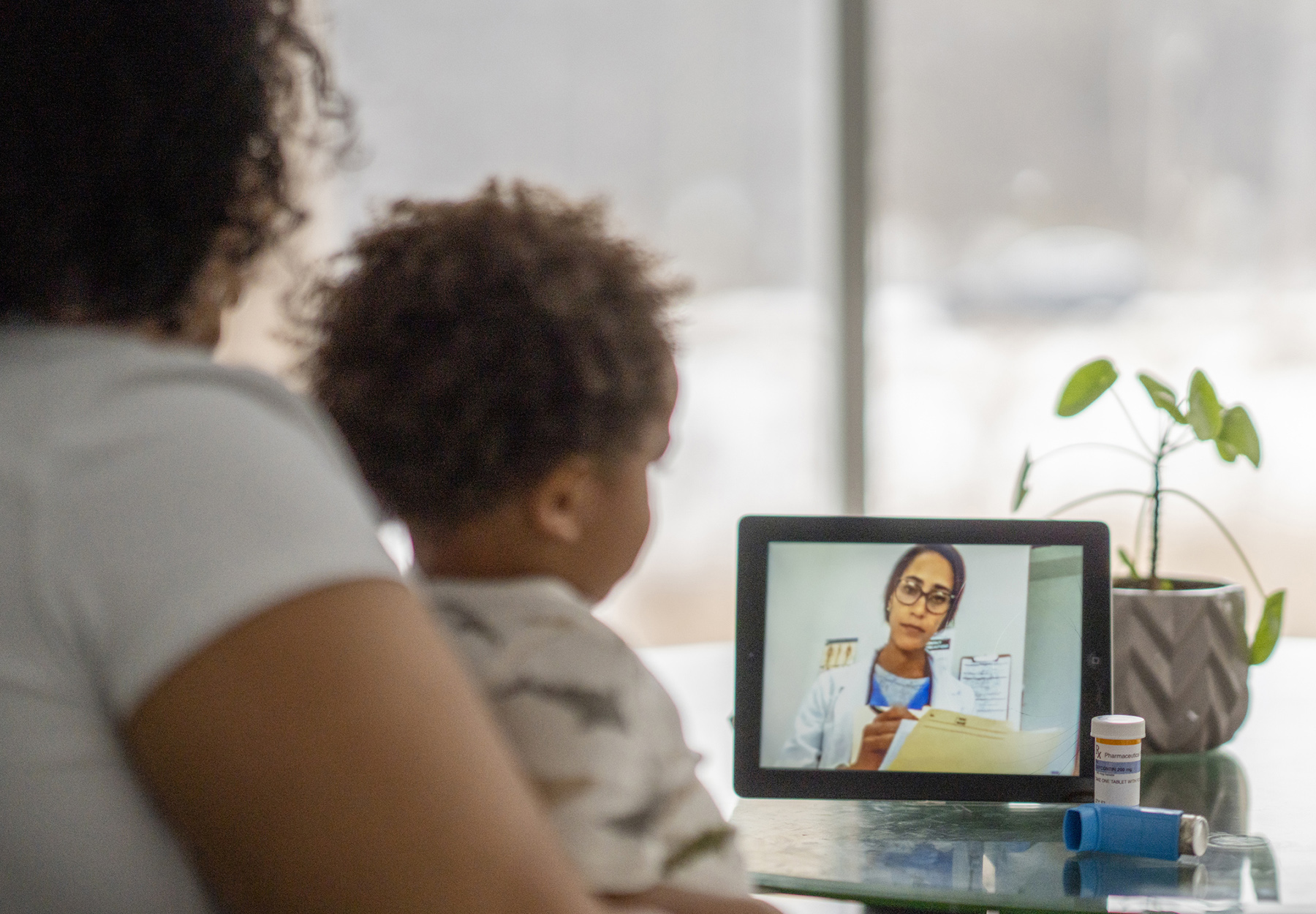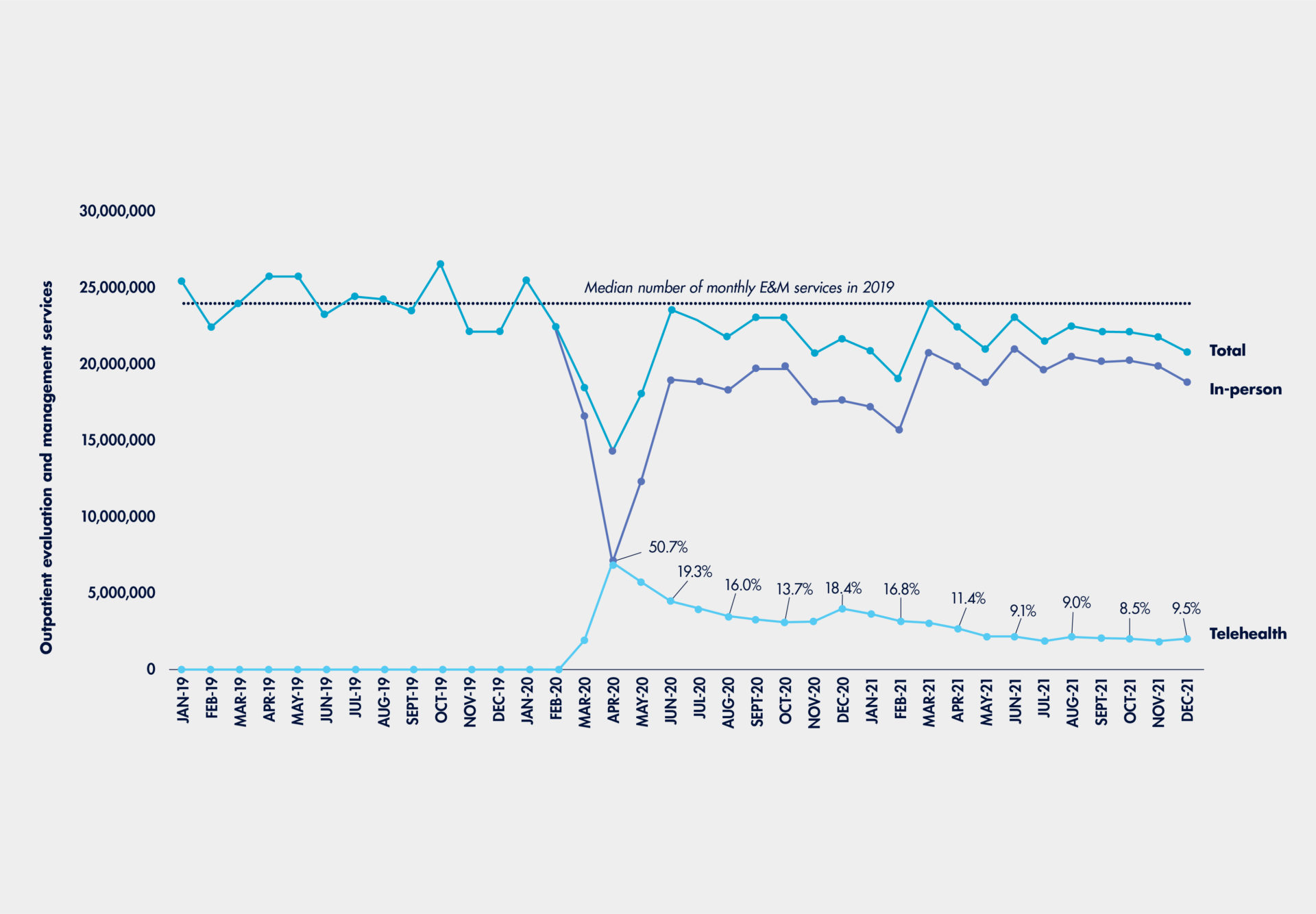Telehealth Doesn’t Discourage In-Person Care or Drive Wasteful Use
Two recent studies show that most people see telehealth as a supplement to in-person visits, rather than a replacement.

When the history books are written, the thing people will likely remember as the most significant long-term result of the COVID-19 public health emergency (PHE) is how it let the telehealth genie out of the bottle. With lockdowns in place, the federal government was forced to relax its tight restrictions on telehealth practice and coverage, leading to an unprecedented surge in utilization during the early months of the PHE. While utilization levels have, predictably, stabilized, it is becoming increasingly clear that we cannot and will not go back to the old ways. Telehealth has proven too beneficial and too popular to put back under lock and key.
What we still do not understand, though, is how, if at all, telehealth will change long-term healthcare utilization patterns. While the advantages telehealth offers in terms of time, cost, convenience, and flexibility are indisputable, it is not intended to substitute for in-person care. The great fear is that telehealth will come to be seen as a replacement rather than a supplement to conventional care and that people will use it as such. The good news is that recent studies of telehealth utilization seem to allay those fears.
Study Allays Concern Over Telehealth as Substitute for In-Person Care
A June 20 survey performed by New York-based telehealth scheduling firm Zocdoc finds that both providers and patients regard telehealth visits as a valuable complement to, rather than a replacement for, in-person care. The company surveyed patients and providers separately over the period between May 2020 and May 2022 and combined these findings on attitudes with appointment bookings. Consistent with other utilization pattern studies, it found that roughly one third of all visits were virtual at the peak of the pandemic in 2020 and that number steadily declined to 17 percent by May 2022. The one notable exception: mental health services telehealth appointments have continued to rise, starting at 74 percent in May 2020, climbing to 85 percent in May 2021 and inching up to 87 percent in May 2022.
Significantly, Zocdoc found extensive evidence to suggest that patients and providers recognized that telehealth visits were not only not a substitute for in-person care but rather a complement and gateway to it. Across all specialties other than mental health over the research period, 81 percent of in-person appointments and 61 percent of virtual appointments were located less than 20 miles from the patient’s home address. While 82 percent of first-time appointments with a new provider took place in person, those who met a provider for the first time virtually often made an in-person follow-up appointment. A significant portion of the 18 percent of virtual appointments with a new provider eventually result in an in-person rebooking.
Zocdoc also examined booking patterns among three groups of specialties with similar patterns of offline-online continuity of care:
- High likelihood of in-person rebooking: OB-GYN, eye doctors, and dentists—50 to 60 percent of those who booked a virtual visit with a new provider in these specialties booked a second, in-person appointment with that same practice;
- Medium likelihood of in-person rebooking: Dermatologists, specialists, primary care physicians, and the average of all specialties excluding mental health—30-45 percent of those who booked a virtual visit with a new provider in these specialties booked a second, in-person appointment with that same practice;
- Lower likelihood of in-person rebooking: Mental health—less than 5 percent of people who booked a virtual visit with a new mental health provider booked a second, in-person appointment with that same practice.
In response to the statement, “I believe I will utilize a combination of telehealth and in-person care in the future,” 77 percent of patient survey respondents indicated that they either “agree” or “strongly agree”; and 83 percent said they “agree” or “strongly agree” that the future of health care will include a combination of telehealth and in-person visits for most patients and providers.
Medicare Patients Didn’t Overuse Telehealth for Wasteful Services
The other concern with increased telehealth utilization is that patients will use it not simply as a substitute for care they would have received in-person but to access wasteful medical services they do not need and would not want were telehealth not an option.
However, Medicare patients did not overuse telehealth during the pandemic. That is the conclusion of a recent study by researchers at the University of Michigan published in medRxiv (pronounced "med-archive") as a preprint article. The researchers analyzed data of Part B claims for 100 percent of Medicare fee-for-service beneficiaries. They identified all outpatient evaluation and management (E&M) services received by beneficiaries from January 1, 2019 through December 31, 2021 and calculated monthly proportion of E&M services that were performed in-person and via telehealth.
The findings: The total number of all outpatient E&M services was:
- 289.0 million in 2019;
- 255.2 million in 2020 (11.7 percent lower than 2019); and
- 260.7 million in 2021 (9.8 percent lower than 2019).
Monthly telehealth services peaked at 7.2 million (constituting 50.7 percent of monthly E&M services) in April 2020 and then slowly declined through the end of 2021. During the second half of 2021, telehealth services made up 8.5 to 9.5 percent of monthly E&M services. Utilization patterns settled in at 10 percent, well below their 2020 peak, but significantly above pre-pandemic levels. In all, one in three people with traditional Medicare coverage saw a healthcare provider virtually at least once in 2021. Meanwhile, in-person visits declined during that same time and in general since 2019. Significantly, the total volume of outpatient E&M services was lower in 2020 and 2021, suggesting that the COVID-19 telehealth flexibilities have not increased the overall volume of outpatient E&M services received by Medicare beneficiaries. These findings should mitigate some concerns about the impact of telehealth on overall healthcare utilization.
Figure 1: Monthly Trend in Outpatient Evaluation and Management (E&M) Services for Medicare Beneficiaries

healthcare services," medRxiv. Evaluation of 100% of Medicare fee-for-service beneficiaries from January 1, 2019 through December 31, 2021. Telehealth includes outpatient services such as office visits, phone visits, virtual check-in, online digital evaluation, remote monitoring, and interprofessional consult. Median number of monthly E&M services from January 1, 2019 through December 31, 2019 was 24,026,954. Source: "Trends in telehealth use by Medicare fee-for-service beneficiaries and its impact on overall volume of healthcare services," medRxiv.
Takeaway
Although the lasting effects of increased telehealth utilization resulting from the pandemic will likely not be known for some time, the early evidence allays fears that the phenomenon will discourage in-person care and drive wasteful remote visits.
Subscribe to Clinical Diagnostics Insider to view
Start a Free Trial for immediate access to this article